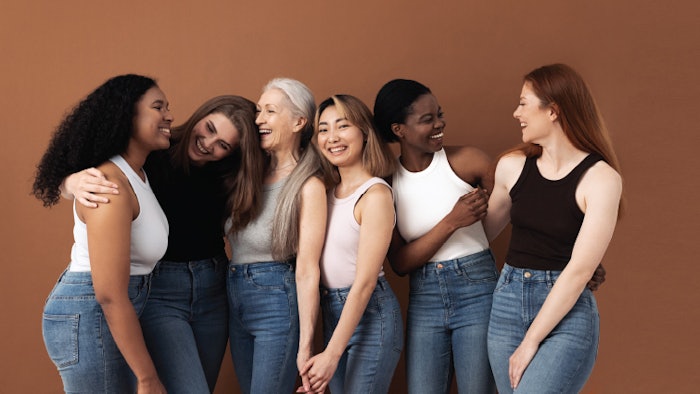
The human face communicates visual information that affects social perception and decisions.1, 2 Evolutionary scientists suggest humans evolved preferences for certain features and view them as attractive because historically, those features were displayed by healthy individuals.3, 4 In this view, the interest in and sensitivity to physical appearance reflects adaptations that motivated successful ancestral mate selection.2, 4
An interest in beauty is not limited to modern Western culture but has been found in most societies.5 Studies have reported common attractiveness standards across ethnic groups and historical periods, suggesting that the constituents of beauty are neither arbitrary nor culture-bound.6 Some social and cultural scientists have challenged this view, proposing variable attractiveness standards across populations are acquired by social learning.7 However, the consensus in judgments of facial attractiveness is consistent with biologically based standards of beauty.6, 8
Moreover, a preference for certain facial characteristics has been documented in infants9 and societies with little exposure to Western media,10 suggesting that attractiveness perception of these features transcends age and media influence. This does not preclude individual differences in attractiveness perception, depending on ecological conditions and population-specific morphology as well as proximate factors, e.g., hormonal influences11 and experience.12
The degree to which conclusions obtained from cross-cultural assessments of attractiveness can be generalized has been a matter of concern, in part because some findings have been derived by pooling information secured in projects with different foci, or from studies that used different equipment or protocols. Presenting images of individuals of one ethnicity to immigrant judges13 has also been criticized because it is difficult to assess the influence of immigrants’ adjustments to population-specific beauty standards.14
Finally, many studies investigating the perception of attractiveness have considered targets or assessors of a narrow age range, such as college-aged women and men. This raises questions about differences in age-related changes in physical features influencing attractiveness.
The present article reviews research on the perception of female facial appearance across societies. It considers recent evidence of a multi-ethnic and multi-center study, detailed elsewhere, to determine the influence of ethnicity on perceived age, attractiveness and health. It also reviews cultural and evolutionary perspectives on appearance-enhancement practices. Finally, it considers solutions for ethnicity-focused skin care based on data, presented here for the first time, from the previous multi-ethnic study...
Read more in the September issue
References
- Zebrowitz, L.A. (2017). First impression from faces. Curr Dir Psychol Sci 26 237-42.
- Fink, B. and Penton-Voak, I. (2002). Evolutionary psychology of facial attractiveness. Curr Dir Psychol Sci 11 154-158.
- Shackelford, T.K. and Larsen, R.J. (1999). Facial attractiveness and physical health. Evol Hum Behav 20 71-76.
- Thornhill, R. and Gangestad, S.W. (1999) Facial attractiveness. Trends Cogn Sci 3 452-460.
- Langlois, J.H., Kalakanis, L., Rubenstein, A.J., Larson, A., Hallam, M. and Smoot, M. (2000). Maxims or myths of beauty? A meta-analytic and theoretical review. Psychol Bull 126 390-423.
- Symons, D. (1995). Beauty is in the adaptations of the beholder: The evolutionary psychology of human female sexual attractiveness. In Abramson, P.R and Pinkerton, S.D., eds.: Sexual Nature, Sexual Culture. The University of Chicago Press 80-119.
- Jackson, L.A. (1992). Physical appearance and gender: Sociobiological and sociocultural perspectives. Albany, State University of New York Press.
- Grammer, K., Fink, B. and Moller, A.P. (2003). Thornhill R. Darwinian aesthetics: Sexual selection and the biology of beauty. Biol Rev Camb Philos Soc 78 385-407.
- Langlois, J.H., Ritter, J.M., Roggman, L.A. and Vaughn, L.S. (1991). Facial diversity and infant preferences for attractive faces. Dev Psychol 27 79-84.
- Fink, B., Butovskaya, M., Sorokowski, P., Sorokowska, A. and Matts, P.J. (2017). Visual perception of British women’s skin color distribution in two non-industrialized societies, the Maasai and the Tsimane’. Evol Psychol 15 1474704917718957.
- Penton-Voak, I.S., Perrett, D.I., Castles, D.L., Kobayashi, T., Burt, D.M., Murray, L.K. and Minamisawa, R. (1999). Menstrual cycle alters face preference. Nature 399 741-742.
- Perrett, D.I., Penton-Voak, I.S., ... Barrett, L., et al. (2002). Facial attractiveness judgements reflect learning of parental age characteristics. Proc R Soc Lond B 269 873-880.
- Cunningham, M.R., Roberts, A.R., Barbee, A.P., Druen, P. B. and Wu, C.H. (1995). Their ideas of beauty are, on the whole, the same as ours": Consistency and variability in the cross-cultural perception of female physical attractiveness. J Pers Soc Psychol 68 261-279.
- Pavlovic^, O., Fiala, V. and Kleisner, K. (2021). Environmental convergence in facial preferences: A cross-group comparison of Asian Vietnamese, Czech Vietnamese and Czechs. Sci Rep 11 550.











